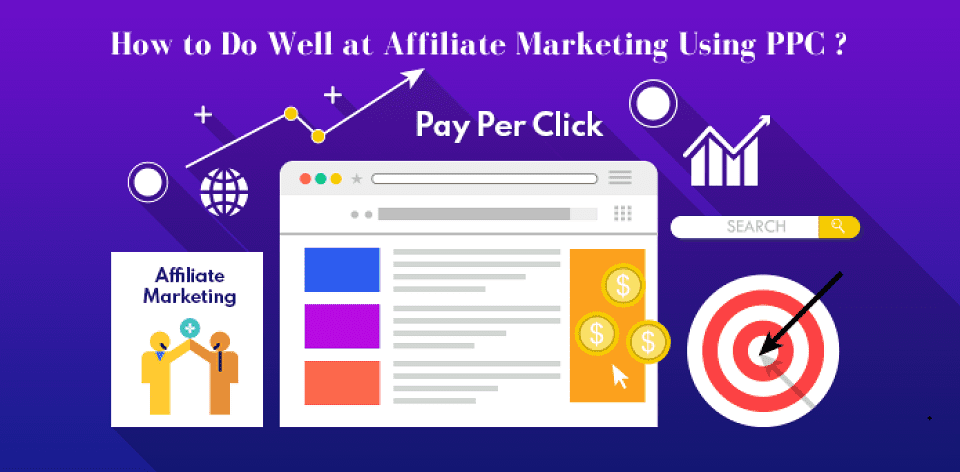User movement is the foundation for the Internet itself. In fact, all affiliate programs you’ll find on the web essentially “feed” on actions by the users.
Don’t believe me? Well, take affiliate programs with pay per click for example.
For one thing, the users need to click on an ad text if we want a chance to close an affiliate deal. Without that user movement / action, nothing will happen.
Let’s dig into affiliate programs starting right at the beginning:
Affiliate Programs And User Actions
All affiliate programs reward affiliates for encouraging very specific actions that are targeted and successful. These actions can be things like clicking a banner or link, visiting a specific page, requesting more information, and hopefully, purchasing.
These are the things that advertisers are paid to generate.
For example, let’s consider a pay-per-click affiliate program. In it, affiliates will receive money from advertisers for the number of clicks made by users through an advertising tool posted on the site.
Most often, you’ll be able to quickly understand how good the ads are based on click-through rates (CTRs). For those who can drive more clicks as a percentage of total impressions, they will be rewarded for the effectiveness of their efforts.
A lot of affiliates focus most heavily on driving views and clicks. Unfortunately, programs that reward these types of actions are inefficient for the advertiser and unprofitable for the affiliate platform itself.
If return on investment (ROI) matters (it always does), these setups are highly likely to produce subpar results.
If you’re paying for a visit on a particular page, you won’t have any guarantee at all that they’ll buy something.
Many programs have moved to better performance-based models such as Pay Per Action (PPA) or Cost Per Action (CPA) models. Let’s review more information about the CPA model now.
Cost Per Action: Pay Only For Results
With the CPA model, advertisers only need to pay for specific types of actions that users complete on the website.
This model is especially useful for programs that advertise based on impressions. With this approach, you only have to pay when the user completes the ultimate end goal you desire.
We can say that with the help of CPA-affiliate programs, an advertiser pays for customers who confirmed their interest in the advertised product or service by performing targeted actions.
Payment Types in CPA Advertising
There are the following payment types in CPA advertising:
- For actions
- For contact details
- For the purchase
CPA ads need to form effective and targeted offers. Then they need to excite the target audience as much as possible, aiming to motivate completion of the desired action on the website.
CPA affiliates are classified into groups based on the target activity for which the advertiser pays. A “mixed” payment model is also permissible, in which a single payment is made for multiple acts performed by users (in different combinations).
Types of Targeted Actions (What Advertisers Are Willing to Pay For)
- Purchase of an advertised product or service – such a payment scheme is more inherent in affiliate programs of online stores
- Registration on the target resource – this scheme is used when promoting information resources to increase the number of mailing list subscribers
- Filling out a questionnaire or application – this scheme is used on commercial sites
- User participation in voting – most often used when conducting opinion polls or marketing research to monitor the coverage of the target audience, etc.
- Filling out a feedback or callback form – this targeted action is used by commercial resources, including some online stores
- Going to a target site or landing page – most often, the transition to the advertiser’s resource is paid for
- Per View – the most striking example is affiliate programs with pay-per-view video advertising
In practice, it is very important to match the type of affiliate program with the “proven options” that tend to work with it.
What Should You Choose?
CPA advertising is beneficial for advertisers, because they only have to pay when they reach the target audience.
For webmasters and website owners, this payment model cannot always provide a decent level of resource monetization. As a result, website owners need to be very careful to select the right affiliate program(s) so they can maximize the potential earnings over time. This is a very complicated process, and PPC experts can help advise you on how to approach it, even if it means embracing several options at once.
Pay-per-click affiliates pay advertising platforms a lower percentage. But this is compensated by a completely guaranteed income and less strict requirements, for both the quality of the supplied traffic and to the resource itself.
As you can see, both models are effective when used the right way, so it is most efficient to adopt several options. In this way, you can have a variety of “bait” triggers for when different users come across your ads. Have a good hunt!
Feature Image provided by the author under his or her own license.
Disclaimer: The views and opinions stated in this post are that of the author, and Return On Now may or may not agree with any or all of the commentary.
This guest post brought to you courtesy of Return On Now, Professional Austin SEO and PPC Services Company.
Mandeep Singh Chahal
Latest posts by Mandeep Singh Chahal (see all)
- How to Do Well at Affiliate Marketing Using PPC - July 27, 2021





